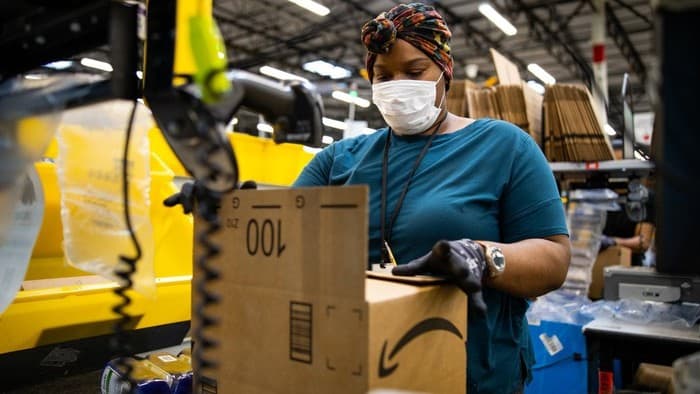This article was originally published on Fool.com. All figures quoted in US dollars unless otherwise stated.
It's inevitable that Amazon (NASDAQ: AMZN) will surpass Walmart (NYSE: WMT) in total merchandise sales in the U.S. at some point. One's growing sales volume more than 20% every year, the other is growing in the low single digits.
But few analysts expected Amazon to overtake the retail giant so quickly. An April report from e-commerce data company Edge by Ascential said Amazon won't pass Walmart until 2025. But J.P. Morgan analyst Doug Anmuth thinks Amazon will pass Walmart in U.S. sales next year. And his assumptions are well within reason.
Where we stand today
Americans spent nearly $818 billion with online retailers over the last 12 months, according to the U.S. Census Bureau.
Amazon holds a market share of approximately 40% of all online sales in the U.S., which puts its gross merchandise volume over the last 12 months around $327 billion. And don't forget, Amazon has a "small" physical retail operation that's brought in over $15 billion in revenue over the last four quarters. That puts its total retail volume around $340 billion.
Walmart U.S. and Sam's Club generated combined revenue of $439 billion over the last four quarters. While Walmart also operates a third-party merchant marketplace -- of which Walmart only counts a percentage of sales as revenue -- it represents a relatively small portion of sales. It also includes gasoline sales in its revenue, which shouldn't count as retail sales.
So, as we stand today, Amazon is still about $100 billion or so behind Walmart. That's a big gap to make up in just seven quarters. But Anmuth believes Amazon's gross merchandise volume excluding its physical stores will climb to $377 billion this year and reach $457 billion in 2022.
Can Amazon grow U.S. sales volume around 20%? Absolutely
The growth in U.S. e-commerce has remained resilient even as more people get vaccinated and become more comfortable with shopping in stores again. People started using Amazon.com and other online marketplaces for more items in 2020, and those shopping habits are sticking. Even so, e-commerce represented less than 15% of all retail over the last year.
There's a lot of room for e-commerce to take share of total retail sales, which ought to lead to sustainable double-digit growth. Amazon has, historically, grown its share of e-commerce sales over time, despite increasing competition. That's in large part thanks to the network effect of its Prime membership and Fulfilled by Amazon programs.
As such, a growing portion of Amazon's online sales come from third-party merchants using its warehouses and logistics networks to provide speedy delivery to Prime customers. As a result, Amazon's gross merchandise volume should be able to sustain growth rates faster than total online retail.
In order for Amazon to reach Anmuth's estimates, it only has to grow gross merchandise volume by about 20% per year this year and next. That's well within reason for Amazon.
The biggest retailer puts a big target on Amazon's back
Surpassing Walmart as the country's largest retailer is a big milestone for Amazon and its investors. It shows the strength of Amazon's core business and the advantages it holds in e-commerce.
That said, it puts an even bigger target on Amazon's back, which has faced growing pressure from regulatory authorities over the years. Amazon has often defended itself pointing out it only accounts for a small portion of all retail sales. With Lina Khan, a big Amazon opponent, now chairing the Federal Trade Commission, and Amazon's growing dominance of U.S. retail, the pressure will continue to mount. Regulatory changes present a growing risk for Amazon shareholders.
Amazon's growth story -- not just in retail, but cloud computing and advertising as well -- remains too compelling to eschew the stock as too risky. Still, it's something investors should be cognizant of when considering Amazon's stock.
This article was originally published on Fool.com. All figures quoted in US dollars unless otherwise stated.









